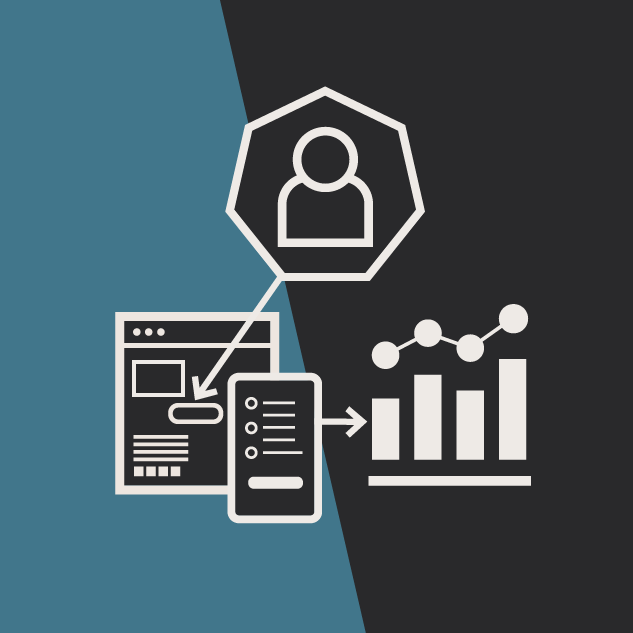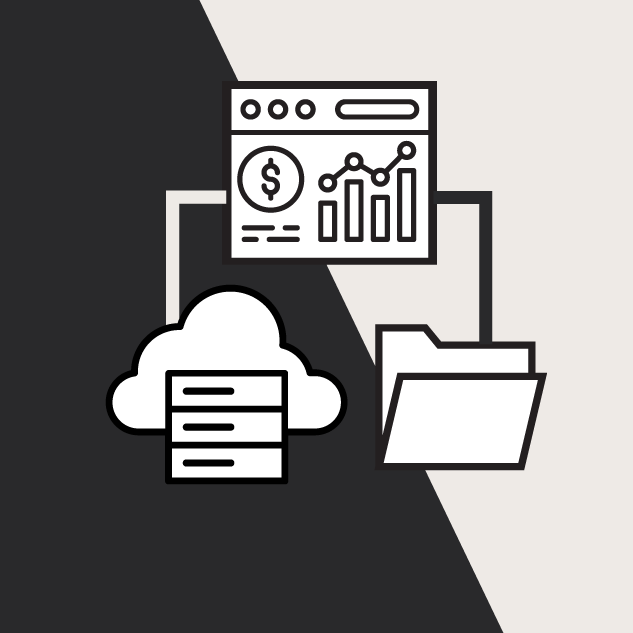Mapping Business Goals to Trackable KPIs
Tara McGlamery Account Strategist#Digital Strategy
Strategic growth and enhancing business performance hinge on an organization's ability to effectively use smart KPIs as benchmarks for progress and their willingness to update strategies when necessary.
In motorsports, drivers rely on various data to inform split-second decision making. Whether it is RPMs, oil pressure, or the average lap time, it is crucial to know how well you and the car are performing to ensure you are on track to win. In digital project management, that track to success is also paved with clear objectives and measurable outcomes. This involves translating client objectives to Key Performance Indicators (KPIs), ensuring every strategic decision propels the project towards its ultimate goal. Digital Strategists are at the forefront of this mission, leveraging data to navigate the intricate path from goals to measurable achievements.
Understanding Goals in Depth
Before setting KPIs, it is important to first have a deep understanding of the client or project's business objectives. These objectives can be broad, targeting long-term growth like market dominance, or more immediate, such as boosting quarterly sales. Recognizing the distinction between these goals is crucial for selecting the right KPIs and crafting business strategies that hit the mark. For instance, an organization aiming for "market dominance" might define it as capturing a 25% market share within three years. This clarity allows for the selection of effective KPIs that reflect market share growth over time.
Examples of Common Goals Turned into KPIs
- Long-term Goal: Building Brand Awareness
- Increase monthly website traffic by 30% within a year through targeted content marketing and Search Engine Optimization (SEO) improvements.
- Grow social media engagement rates by 25% year over year, focusing on key platforms anywhere your target audience is most active.
- Short-term Goal: Enhancing Lead Generation
- Decrease the website’s bounce rate by 15% in the next three months by optimizing page load times and improving navigation.
- Increase the click-through rate (CTR) on the key call-to-action buttons by 20% through A/B testing and design refinements.
By establishing specific targets, we translate and tune abstract goals into metrics that can be systematically pursued and measured.
Defining and Setting KPIs
Setting KPIs is where creativity meets precision. It is not just about crunching numbers; it is about painting a picture of potential futures and the paths we can take to reach them. Let us dive into how we can refine these KPIs to track progress effectively and steer your project in the right direction.
What are KPIs?
KPIs are the quantifiable markers that indicate how closely a project aligns with its objectives. They convert lofty ambitions into tangible targets, offering a clear lens through which success is measured. But setting and using KPIs is not a stab in the dark; it requires a methodical approach that starts with a deep dive into the client's goals. This includes establishing a baseline for current performance and setting realistic, yet ambitious targets that are in sync with the client's aspirations.
Strategies for Mapping Client’s Goals to Specific KPIs
The art of setting the most important KPIs begins with a thorough analysis of the client's goals, followed by selecting metrics that directly reflect progress towards these goals. This involves establishing baseline measurements to understand the current performance level and setting realistic, time-bound targets that align with the stakeholder aspirations. Here are a few examples:
- Market Dominance Through Social Media Engagement: For a goal like market dominance, social media engagement metrics such as shares, likes, and comments can serve as leading indicators of brand reach and authority.
- A KPI might be to double social media engagement rates within 12 months.
- Customer Loyalty Through Repeat Purchase Rates: Cultivating customer loyalty can be measured by the repeat purchase rate.
- A target KPI could be to increase the repeat purchase rate from existing customers by 20% within a fiscal year.
Bridging the gap between broad objectives and tangible outcomes requires a balanced approach to setting relevant KPIs that are not overly ambitious but grounded in the reality of the business's current standing and market dynamics.
Setting Realistic Targets
Targets should be ambitious yet attainable, challenging the team to excel but remaining grounded in reality. This balance ensures motivation and prevents the frustration that can come from unachievable goals. One of the best ways to establish a baseline for these targets is to benchmark against industry standards. For example, if the average annual growth for e-commerce sites is around 15%, setting a target for a 50% increase in website traffic might be unrealistic without significant investment or strategy changes.
By anchoring these targets in the reality of industry benchmarks, businesses can set goals that are challenging yet achievable. This approach not only fuels motivation by setting a clear path to success but also safeguards against the disappointment that often follows from pursuing unattainable objectives; making realistic targets serve as the foundation of sustainable growth and progress.
Adjusting Targets
As is the case with most things in business – the only thing that is constant, is change. Which is why long-term goals can often become a hindrance rather than a help. Many organizations fall into the trap of setting fixed targets with the assumption that market conditions will remain constant—a misconception that can lead to strategic misalignment and failure. The reality is that market dynamics, consumer behavior, and competitive landscapes evolve continuously, making agility not just beneficial but essential for long-term success. Below are a few areas that organizations should consider when setting agile targets:
- Adapting to Change: The key to effective long-term goal setting is the incorporation of flexibility to adapt to unforeseen changes. Whether it is a global economic shift, a sudden change in consumer preferences, or the emergence of disruptive technologies, businesses need to be prepared to reevaluate and adjust their targets accordingly.
- Periodic Review and Adjustment: This necessitates a system of periodic reviews where goals and KPIs are assessed and recalibrated if necessary. For instance, an unexpected entry of a powerful competitor might require a business to pivot from aggressive market share growth to consolidation and customer retention strategies.
- Embracing Market Feedback: Incorporating feedback from the market is crucial. This means actively analyzing performance data, customer feedback, and market trends. Such insights can highlight when a shift in strategy is needed, ensuring that long-term goals remain relevant and achievable.
- Cultivating an Agile Mindset: Beyond mere strategy adjustment, cultivating an agile mindset within the organization encourages proactive rather than reactive responses to market changes. This mindset shift ensures that agility is embedded in the strategic planning process, with teams ready to pivot strategies in alignment with evolving market conditions.
The ability to adjust targets in response to changing market conditions is not just a strategic advantage; it is a necessity for survival and success. By embracing agility in goal setting, organizations can navigate uncertainties more effectively, making adjustments not as concessions but as strategic maneuvers that keep them on the path to achieving their long-term ambitions.
Tracking KPIs with Advanced Tools
Utilizing the right tools for tracking KPIs cannot be overstated. Beyond traditional analytics platforms, leveraging advanced data analysis and visualization tools brings clarity and actionable insights. A few of the more common toolsets are listed below.
BigQuery and Looker Data Studio
BigQuery, Google's serverless data warehouse, facilitates the analysis of large datasets, offering a bird's-eye view of user behavior, transaction volumes, and more. It is a game-changer for handling complex data analysis with agility. Looker Data Studio enables the creation of customizable dashboards, making it easier to present complex data in a digestible format. By pulling in data from various sources, it can provide a comprehensive overview of performance metrics, ensuring that digital strategists can keep their finger on the pulse of the project's health. Below are a few examples of how these tools help organizations track and adapt KPIs in real-time.
- Analyzing Transaction Volumes for Sales Goals: With BigQuery, digital strategists can analyze transaction volumes in real-time, correlating sales data with marketing campaigns to adjust strategies swiftly.
- Visualizing Website Traffic Growth: Looker Data Studio can visualize trends in website traffic growth, enabling strategists to pinpoint which channels contribute most effectively to meeting the quarterly sales targets.
BigQuery and Looker Data Studio revolutionized how digital strategists approach data analysis and visualization. Their capabilities allow for agile adjustments to strategies based on real-time insights and relevant data into user behavior and transaction volumes.
Heat Map Tools: Visualizing User Engagement
As we transition from the tangible clarity of quantitative metrics, it is equally important to consider the role of qualitative metrics. These metrics, though not always directly measurable, offer invaluable insights into the subtler aspects of user experience and brand perception, shaping the strategies for long-term success. Tools like Clarity and HotJar offer insights into user interactions on a website, revealing hot spots of activity and areas commonly overlooked by users. This information is invaluable for optimizing website design and content placement, directly impacting KPIs related to engagement and conversion.
Conclusion
KPIs are crucial for strategic growth, acting not just as targets but as signs of an organization's commitment to its specific goals, which need to be focused yet adaptable. If organizations skip the steps of setting, measuring, and adjusting their goals and KPIs, they often struggle, missing opportunities to adapt to changes in the market.
For digital marketers, the importance of KPIs goes beyond simple tracking; they ensure that every effort aligns with the larger strategic goals. This requires a thorough understanding of what the client wants, creating meaningful KPIs, and being ready to adjust strategies as the digital environment evolves. This comprehensive method of goal setting and performance tracking is what distinguishes successful projects from those that do not meet their objectives. Essentially, achieving strategic growth and enhancing business performance hinges on an organization's ability to effectively use smart KPIs as benchmarks for progress and their willingness to update their marketing strategies when necessary.
Frequently Asked Questions
Long-term KPIs focus on broad business aspirations and growth over years, such as increasing market share. Short-term KPIs target immediate improvements, like reducing bounce rates or enhancing monthly sales.
To ensure KPIs are realistic, organizations should start by analyzing historical data and industry benchmarks to set achievable targets. If KPIs aren’t met, it’s important to conduct a detailed review to determine if the goals were overly ambitious, if external factors have changed, or if operational execution fell short. Based on this review, adjustments may include refining the KPIs, altering tactics, or setting phased targets to gradually achieve the long-term objectives.
BigQuery allows for the efficient analysis of large datasets, enabling strategists to identify trends and correlations affecting KPIs, such as how marketing campaigns impact sales data. Looker Data Studio complements this by offering customizable dashboards that present complex data visually, making it easier to track progress towards specific KPIs and adjust strategies based on up-to-date insights.
Related Articles
Results Matter.
We design creative digital solutions that grow your business, strengthen your brand and engage your audience. Our team blends creativity with insights, analytics and technology to deliver beauty, function, accessibility and most of all, ROI. Do you have a project you want to discuss?
Like what you read?
Subscribe to our blog "Diagram Views" for the latest trends in web design, inbound marketing and mobile strategy.


